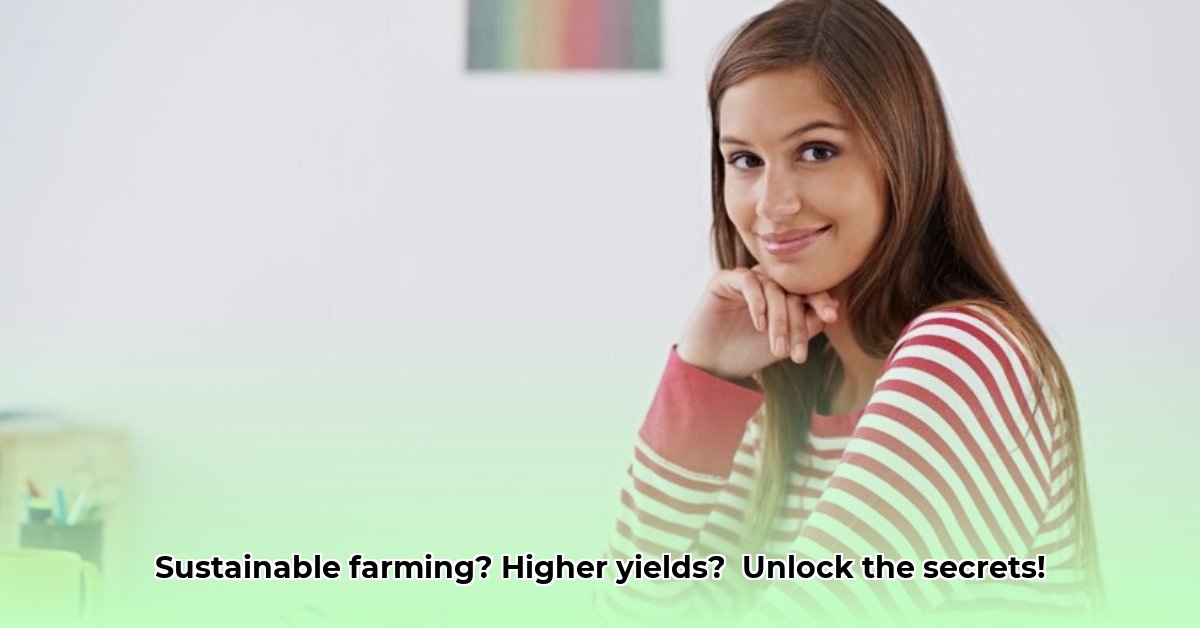
Precision Agriculture: Farming with a GPS
Let's be honest: farming isn't your grandfather's back-breaking labor anymore. It's a technologically advanced industry, and precision agriculture is leading the charge. This approach leverages sensors, satellites, and data analysis to provide a real-time checkup for your fields, monitoring everything from soil moisture to individual plant health. This allows for targeted resource allocation—delivering exactly the right amount of water, fertilizer, and pest control—precisely when and where it's needed. This targeted approach minimizes waste, maximizes yields, and significantly reduces the environmental footprint. For example, soil moisture sensors can pinpoint thirsty areas, leading to efficient irrigation and substantial water savings. Isn't it amazing to think that each plant can receive a customized care plan? This personalized approach represents a significant step forward in sustainable agriculture. For more information on local farmers markets, visit the Robbinsville Farmers Market.
Crop Rotation: Nature's Way to Healthy Soil
Imagine planting the same crop in the same spot year after year. While seemingly efficient, this monoculture practice depletes soil nutrients, leaving it vulnerable to pests and disease. Smart farmers employ crop rotation, strategically changing what they plant each year. This diversifies the soil's nutritional intake, preventing depletion and promoting a balanced ecosystem. Just as a diversified investment portfolio reduces risk, crop rotation minimizes the chances of widespread crop failure. Rotating corn, soybeans, and wheat, for instance, is often cited as a successful strategy, though the optimal rotation depends on your specific location and climate. This simple yet profound technique demonstrates the power of working with nature, rather than against it. Have you considered what the impact on your soil health could be if you made this simple change?
Smart Irrigation: Making Every Drop Count
Water scarcity is a growing global concern, making efficient irrigation crucial for sustainable agriculture. Traditional flood irrigation methods waste vast amounts of water through runoff and evaporation. Smart irrigation tackles this challenge head-on. Techniques like drip irrigation deliver water directly to plant roots, minimizing waste. Combining this with rainwater harvesting and soil moisture sensors allows for precise water delivery, ensuring plants receive exactly what they need, and nothing more. This precision not only saves water and reduces costs but also minimizes environmental impact. It's like switching from watering your entire lawn to only watering thirsty patches—making every drop count. How much water could you save by adopting such a smart approach?
Integrated Pest Management (IPM): Nature's Pest Control
While chemical pesticides can be effective, they also carry significant environmental and health risks. Integrated Pest Management (IPM) offers a more balanced approach, prioritizing prevention and minimizing the use of chemical pesticides. IPM utilizes a multifaceted strategy that incorporates natural predators (like ladybugs controlling aphids), crop rotation (disrupting pest lifecycles), and targeted pesticide use only as a last resort. This ecologically sound approach keeps yields high while significantly reducing harmful environmental impact. By focusing on prevention and natural controls, IPM showcases the power of working harmoniously with nature. What are the long term implications on your farm if you shift to this sustainable pest management system?
Soil Health: The Unsung Hero
Healthy soil is the foundation of successful and sustainable farming. It’s a complex ecosystem teeming with life that requires careful nurturing. Practices like cover cropping (planting crops specifically to improve soil health), no-till farming (minimizing soil disturbance), and composting significantly enhance soil structure, increase nutrient content, and improve water retention. These practices aren't just about improving current yields; they're crucial for long-term soil health and resilience to climate change. Healthy soil equals healthy plants, leading to higher yields and a more sustainable farming future. This foundational practice underpins the success of all other sustainable farming efforts. Are you taking all the necessary steps to build and maintain healthy soil?
Implementing Precision Agriculture Using IoT Sensors: A Step-by-Step Guide
Key Takeaways:
- IoT sensors, AI, and data analytics are transforming sustainable agriculture.
- Implementing these technologies optimizes resource use and improves yields.
- Significant challenges include high initial investment, data security, and bridging the digital literacy gap among farmers.
Successful implementation requires collaboration between farmers, businesses, and governments.
Assessment: Begin by identifying your farm’s specific needs. What key parameters require monitoring (e.g., soil moisture, temperature, nutrient levels)?
- Sensor Selection: Choose sensors that accurately measure the parameters you’ve identified, ensuring compatibility with your chosen data management system.
- Network Deployment: Strategically install sensors and establish a robust data communication network (e.g., cellular, Wi-Fi, or LPWAN) considering your farm’s infrastructure and coverage needs.
- Data Management: Select a platform capable of collecting, storing, and analyzing the vast amounts of data generated by the sensors. Cloud-based solutions are often preferred for scalability and accessibility.
- AI Integration: Integrate AI-powered analytics to identify patterns, predict yields, and generate actionable insights from the collected data.
- Actionable Insights: Utilize the data-driven insights to optimize resource allocation (water, fertilizer, pesticides), leading to improved efficiency and higher yields.
Successfully implementing this will depend on overcoming considerable challenges: The high initial investment in technology can be a barrier for many farmers; robust data security protocols are essential to protect sensitive farm data; and finally, targeted training programs must bridge the digital literacy gap among farmers. Successful implementation requires a collaborative effort involving farmers, technology providers, and government support.
The future of farming is undeniably intertwined with technology; embracing precision agriculture through IoT sensors is not just about increasing yields—it's about creating a more sustainable and resilient food production system. By farming smarter and more efficiently, we build a future where food production is both environmentally responsible and economically viable.